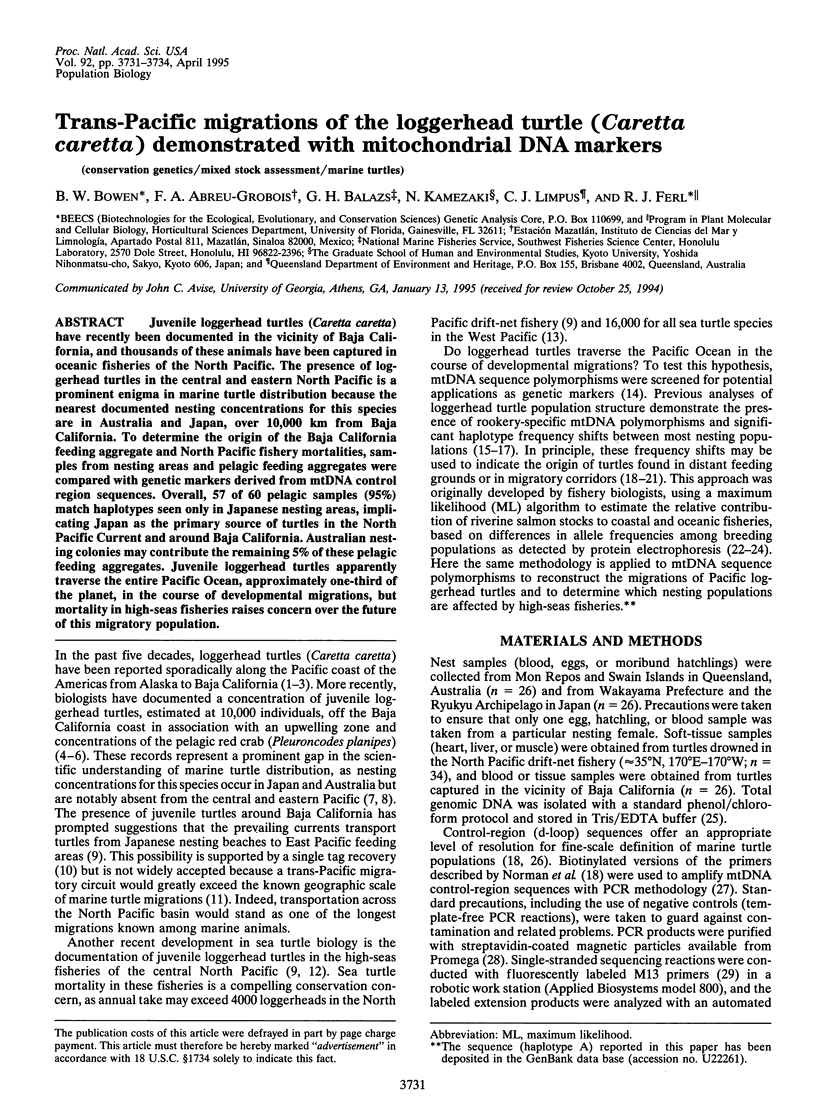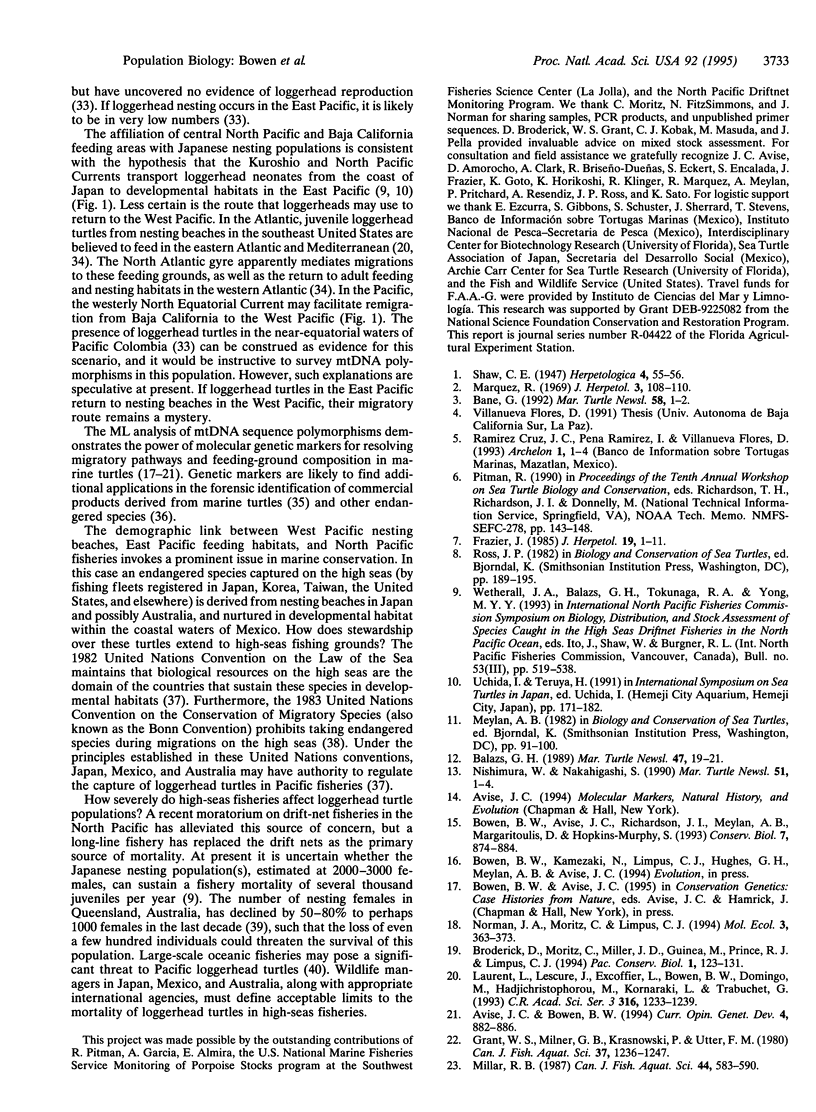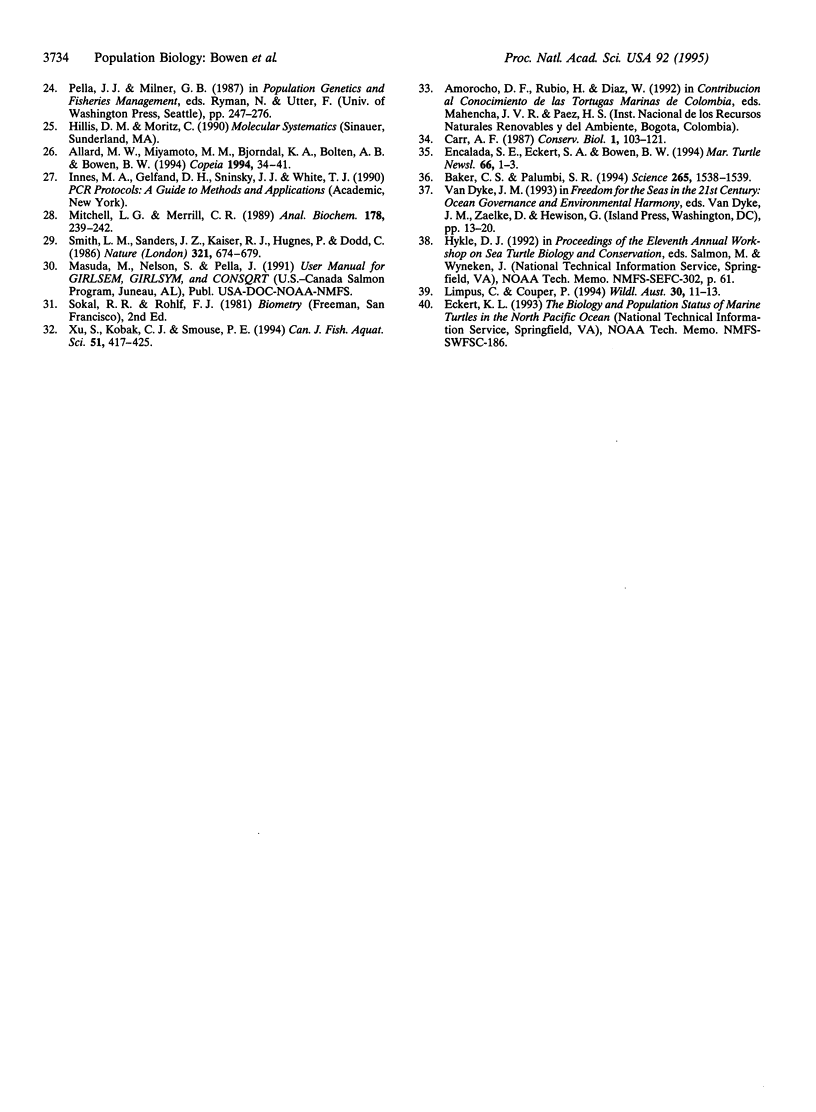Abstract
Juvenile loggerhead turtles (Caretta caretta) have recently been documented in the vicinity of Baja California and thousands of these animals have been captured in oceanic fisheries of the North Pacific. The presence of loggerhead turtles in the central and eastern North Pacific is a prominent enigma in marine turtle distribution because the nearest documented nesting concentrations for this species are in Australia and Japan, over 10,000 km from Baja California. To determine the origin of the Baja California feeding aggregate and North Pacific fishery mortalities, samples from nesting areas and pelagic feeding aggregates were compared with genetic markers derived from mtDNA control region sequences. Overall, 57 of 60 pelagic samples (95%) match haplotypes seen only in Japanese nesting areas, implicating Japan as the primary source of turtles in the North Pacific Current and around Baja California. Australian nesting colonies may contribute the remaining 5% of these pelagic feeding aggregates. Juvenile loggerhead turtles apparently traverse the entire Pacific Ocean, approximately one-third of the planet, in the course of developmental migrations, but mortality in high-seas fisheries raises concern over the future of this migratory population.
Full text
PDF



Selected References
These references are in PubMed. This may not be the complete list of references from this article.
- Avise J. C., Bowen B. W. Investigating sea turtle migration using DNA markers. Curr Opin Genet Dev. 1994 Dec;4(6):882–886. doi: 10.1016/0959-437x(94)90074-4. [DOI] [PubMed] [Google Scholar]
- Baker C. S., Palumbi S. R. Which whales are hunted? A molecular genetic approach to monitoring whaling. Science. 1994 Sep 9;265(5178):1538–1539. doi: 10.1126/science.265.5178.1538. [DOI] [PubMed] [Google Scholar]
- Laurent L., Lescure J., Excoffier L., Bowen B., Domingo M., Hadjichristophorou M., Kornaraki L., Trabuchet G. Etude génétique des relations entre les populations méditerranéenne et atlantique d'une tortue marine (Caretta caretta) à l'aide d'un marqueur mitochondrial. C R Acad Sci III. 1993 Oct;316(10):1233–1239. [PubMed] [Google Scholar]
- Mitchell L. G., Merril C. R. Affinity generation of single-stranded DNA for dideoxy sequencing following the polymerase chain reaction. Anal Biochem. 1989 May 1;178(2):239–242. doi: 10.1016/0003-2697(89)90631-3. [DOI] [PubMed] [Google Scholar]
- Norman J. A., Moritz C., Limpus C. J. Mitochondrial DNA control region polymorphisms: genetic markers for ecological studies of marine turtles. Mol Ecol. 1994 Aug;3(4):363–373. doi: 10.1111/j.1365-294x.1994.tb00076.x. [DOI] [PubMed] [Google Scholar]
- Smith L. M., Sanders J. Z., Kaiser R. J., Hughes P., Dodd C., Connell C. R., Heiner C., Kent S. B., Hood L. E. Fluorescence detection in automated DNA sequence analysis. Nature. 1986 Jun 12;321(6071):674–679. doi: 10.1038/321674a0. [DOI] [PubMed] [Google Scholar]


